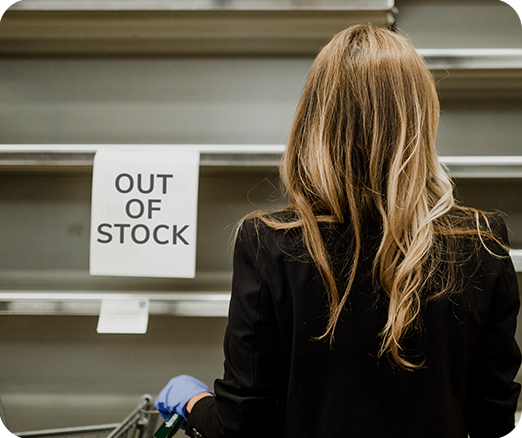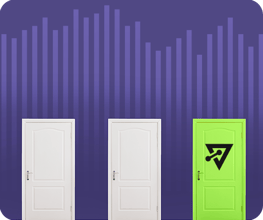
Avoid These 6 Negative Effects of Out-of-Stocks
Table of Contents
If there is one thing both consumers and those in the consumer packaged goods (CPG) and retail industries understand very well, it’s that a product being out of stock is not good—to say the least.
When you’re a consumer on a mission for a certain product, it’s frustrating and disappointing to get to the store to find an empty shelf where your item should be. It’s even more disappointing when there’s no clear indication when the product will be back in stock.
Those who work for CPG companies also experience the frustration that comes with stockouts. When a retailer is out of stock for a particular product, it can have a significant impact and ripple effect on several areas and especially the company’s bottom line.
Here are six ways in which out-of-stock product can negatively affect CPG companies and their retailer partners:
OUT-OF-STOCK MEANS LOST SALES
The most obvious impact of out-of-stock inventory is lost sales. When a customer goes to a physical store or even visits a store’s website or an e-commerce platform intending to purchase a particular product, but that product is not available, they will likely buy an alternative product—which may or may not be one of your company’s products and which may or may not be in that store. Or the consumer will simply not purchase anything at all. Both scenarios result in lost sales for the CPG and the retailer and can lead to decreased revenue, as customers may delay or cancel their purchases altogether.
BYE-BYE TO CONSUMER TRUST AND BRAND LOYALTY
When a shopper is unable to find a product that they regularly purchase, they may be forced to switch brands—permanently. This occurrence can quickly erode brand and store loyalty and make it harder for the CPG company to regain that customer's trust and repeat business in the future.
A business's reputation can easily be negatively impacted if they consistently have out-of-stock products, as consumers may perceive this as a sign of poor management or insufficient inventory planning.
FRACTURED RELATIONSHIPS WITH RETAILERS
Retailers may become frustrated with a CPG company that consistently can’t deliver product on time or enough product to ensure on-shelf availability. Having empty shelves hurts a retailer’s sales and revenue and they could have prioritized promoting and selling products that are actually in-stock, instead of waiting for yours. This can damage the relationship between the two parties and lead to the retailer choosing to stock a competitor's products instead.
HANDING YOUR BUSINESS OVER TO A COMPETITOR
What happens when a consumer can’t find your product? They have to go with the next best thing. Whenever this happens, you always run the risk of them “switching sides” and becoming brand loyal to your competitor, especially if the consumer is the victim of continuous stockouts. Consumers don’t want to guess whether they will be able to find your product or wait for it in today’s “I need it now” world, so they’ll go with what’s available to them.
INCREASED PRODUCTION AND LOGISTICS COSTS
When a retailer has out-of-stock inventory, it may indicate a problem with the CPG’s production and logistics or supply chain processes. If a retailer is demanding replenishment product immediately, this can result in increased production and delivery costs and delay production of other products; thus, disrupting supply chain processes.
MISSED OPPORTUNITIES FOR EFFECTIVE TRADE PROMOTIONS
CPGs invest a great deal of time and effort in planning and implementing trade promotions. They’re an effective way to attract new consumers and generate incremental sales—and of course, to see what makes people continuously buy their products. However, if your company is running a trade promotion and the items aren’t available for purchase, then you’re left paying for advertising that’s bringing you no return. You’ve now wasted time and money.
SUMMARY
Overall, out-of-stocks are detrimental to a CPG company's operations, financial performance, customer and consumer satisfaction and loyalty, and brand image. It's critical to the bottom line that companies prioritize effective supply chain processes and inventory management to minimize the risk of stockouts and ensure that they can consistently meet consumer demand and retailer partner expectations and sales and revenue goals.
For more than 28 years, Retail Velocity has enabled users across sales, marketing, and the entire supply chain to more effectively monitor and manage supply and inventory to avoid stockouts before they occur. With more timely and accurate data that drives more-informed business decisions and insights, you can ensure the products your consumers want are on the right shelf at the right time.
Contact us today to learn more about how you can avoid the negative impacts of out-of-stocks.



